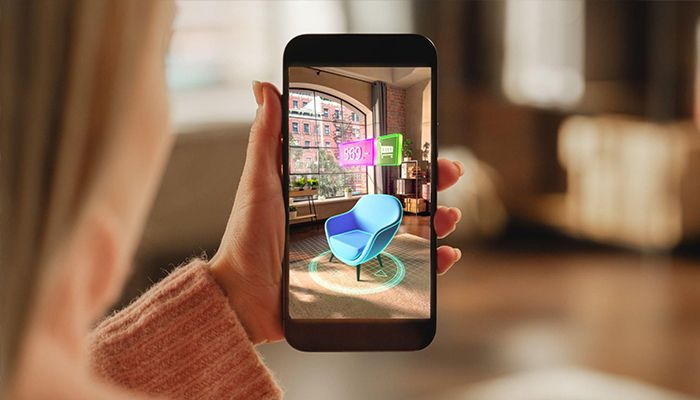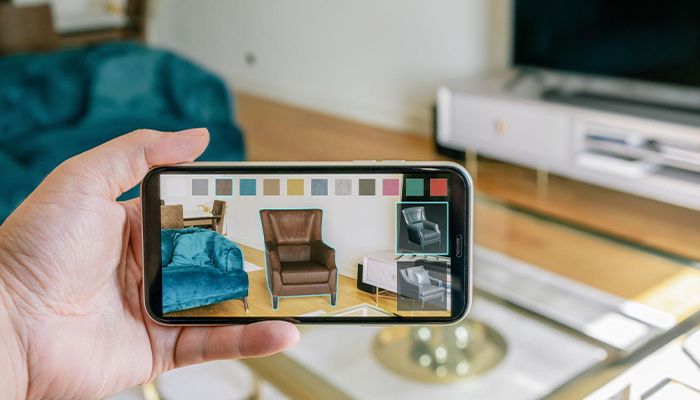Have you come across augmented reality (AR)? Perhaps you still remember the famous mobile game Pokemon Go, where you could capture Pokemon via your mobile phone camera. Also, you must have come across different filters on your phone while taking photos. All of these have one common point. They are all examples of augmented reality. You must know that this advancement in technology offers a unique and immersive experience. AR applications overlap in real life. With the use of real-world environments, it integrates digital objectives. From medical treatments where surgeons perform complicated operations to exploring a different range of clothing accessories, the application of augmented reality is revolutionizing technology to the next level.
Exploring the past
AR technology has been there for a very long time. The development started in the early 1960s, with a major focus on head-mounted display systems. However, its association with the military and development gained momentum. The integration of AR applications into industrial simulations slowly transformed the way product development proceeded. Since then, there has been rapid development for both commercial and individual purposes.
Some of the leading companies, like Coca-Cola and National Geographic, have introduced AR into their business applications. Google Glass was one of the first products to come with AR integration. By 2017, over 187 million people had used Snapchat. AR gained popularity on multiple social networks.
How does AR work?
AR has a vast application. Moreover, it works on a sophisticated platform. However, we’ll simply do it and help you understand the major areas.
Camera sensors

In order to develop augmented reality, it is essential to capture actual reality and gather information on the users’ actual surroundings. With the real-time information on the backdrop, it can create an immersive experience. Here, the smartphone application uses the phone’s camera. The technology focuses on cameras that can read images in 3D.
Image processing
The AR application equally focuses on processing, where it analyzes dynamics like acceleration, position, tilt, and depth. Image processing plays a pivotal role in AR applications by enabling the recognition, tracking, and interaction of virtual objects within the real world. Nowadays, smartphones utilize algorithms that enable the recognition, tracking, and augmentation of objects or scenes within the user's field of view.
Outlook
Once the real-world information gets captured, the device collaborates all the digital rendering onto the scenes. There's a display on the screen. Meanwhile, it can be projected onto surfaces too. The goal is to make these projected elements look natural and interact with the physical environment and other real-world objects. The ultimate outlook is to see and interact with augmented content that enhances perception and interaction with the real world.
Different types of augmented reality (AR)
While AR devices share many common aspects, AR has been segmented into different modules. Let us explore what areas they cover.
Image recognition AR

The image recognition in augmented reality triggers objects like a QR code. There’s least about processing, where it completely relies on specific triggers. However, it isn't as versatile as it should be.
Markerless
It's one of the most efficient technologies. The process utilizes cameras, GPS, and accelerometer information when it comes to tracking the user and producing the information. This is also known as Simultaneous Localization and Mapping, or SLAM.
Projection oriented
The AR application involves images projected directly onto the object’s surface within the user’s environment. It enables projecting a functioning keyword on the desk. This type of AR seamlessly negates the need for a screen or headset, enabling a smoother experience. A projection-based experience may not always be the most practical option.
Outline
When it comes to outlining AR, instead of simply changing the entire scene, the process uses image recognition. It helps outline boundaries and shapes.
Superimposition
With superimposition-based AR, it uses object recognition to replace objects within the user’s environment using a digital image.
Conclusion
AR technology leverages computer vision, tracking, and sensor integration to seamlessly blend digital elements with the real world, enhancing our perception and interaction with the environment.
From image recognition and spatial mapping to the precise overlay of virtual content, AR has ushered in a new era of interactive and immersive experiences across a wide range of industries. As AR continues to evolve, it promises to unlock endless possibilities for innovation, creativity, and practical applications in our increasingly digital and connected world.
FAQ
What is AR in application?
AR in applications utilize software programs that use cameras and sensors to overlay digital content, such as 3D objects, information, or animations, onto the real world in real-time. It offers interactive and immersive experiences.
What are the features of an AR application?
AR applications feature real-time image recognition and tracking, enabling the precise overlay of virtual content onto the real world. It offers interactive and immersive experiences, including 3D object placement, information overlays, and interactive animations. Many AR apps also incorporate location-based services and gesture recognition for user interaction.
What are the benefits of AR applications?

AR applications offer a range of benefits. This is not only limited to the user experience but also offers a range of services. It provides,
Interactive learning
Engaging entertainment
Practical solutions for a wide range of industries
Improves efficiency and productivity
What are the key technologies in AR?
Key technologies in AR include computer vision for image recognition, simultaneous localization and mapping (SLAM) for tracking, and sensor integration to understand the user's environment. These technologies enable the precise placement of virtual objects in real-time, enhancing the user's augmented reality experience.






